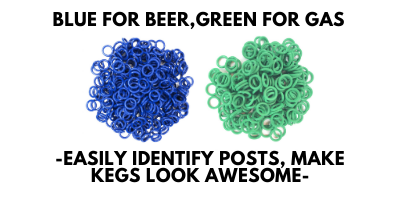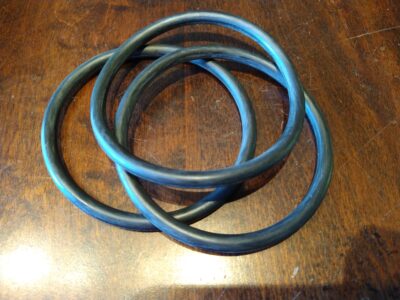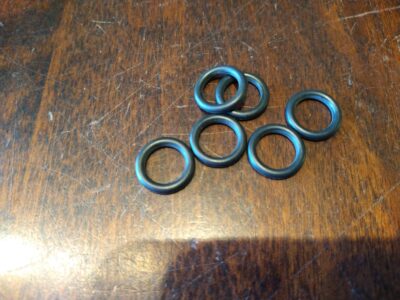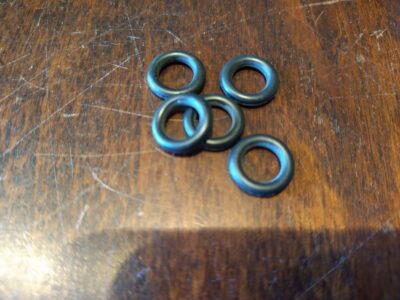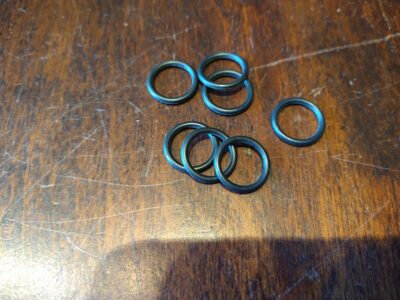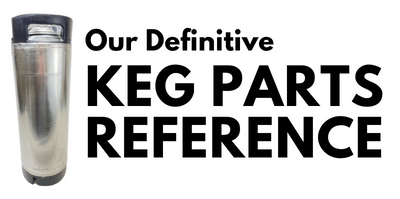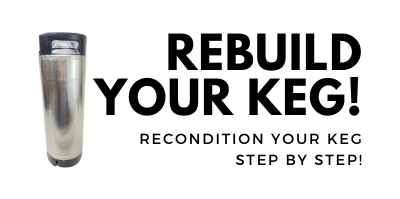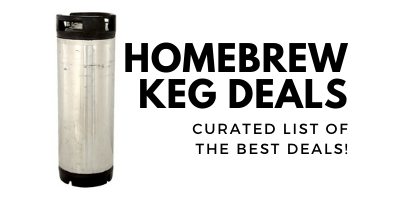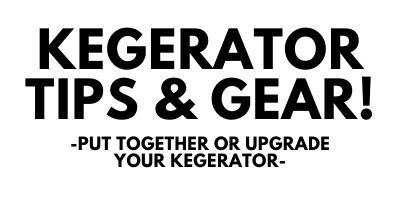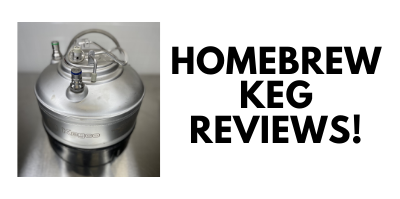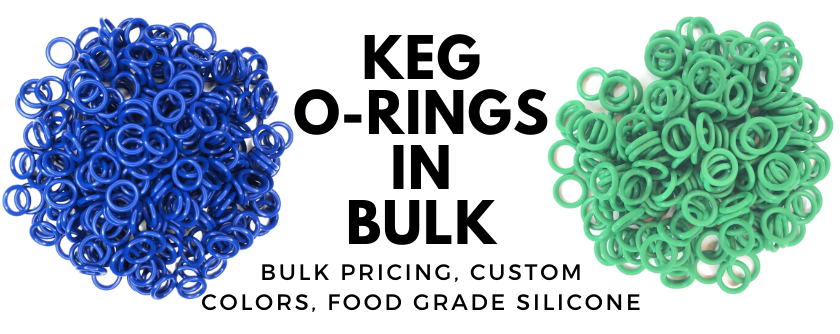
Hands on Review: Valuebrew’s EPDM Keg O-Rings
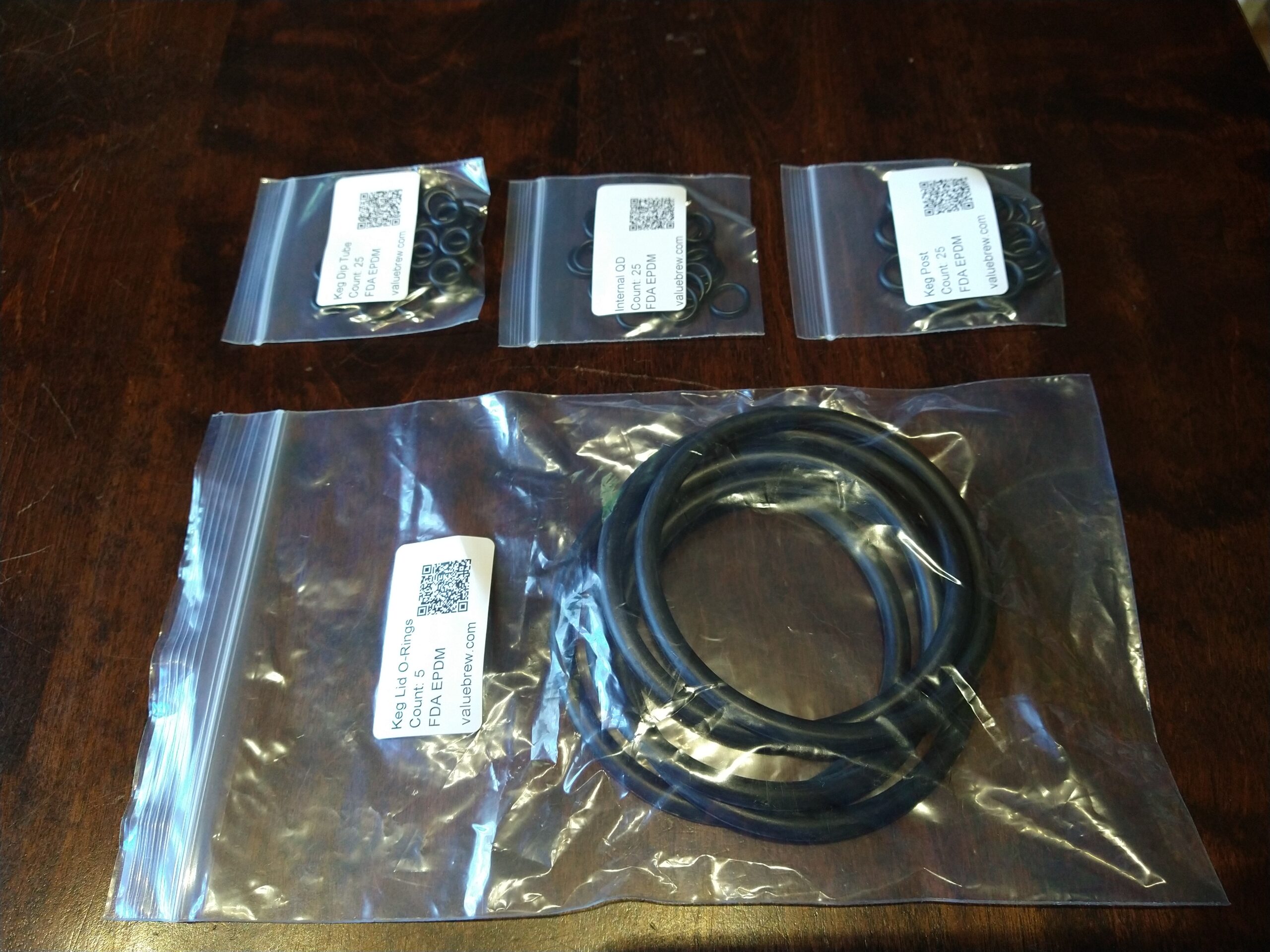
Updated: August 21, 2024
This review is by Homebrew Finds Contributor Brad Probert. Brad is an engineer, expert homebrewer and experienced reviewer. Grab a link to Brad’s website at the end of this review.
In the world of homebrewing, you can surround yourself by as little or as much science as you want. O-rings, seals, and gaskets come in different varieties in homebrewing. The most commonly found material is silicone, and it’s often elevated as the “best” material. As with most things, there are benefits/drawbacks to each different type of material. Silicone has a very wide temperature range, making a good gasket seal choice at cold temperatures, as well as at hot/boiling temperatures. Its high flexibility makes it well-suited to sealing uneven gaps or perhaps non-ideal sealing surfaces.
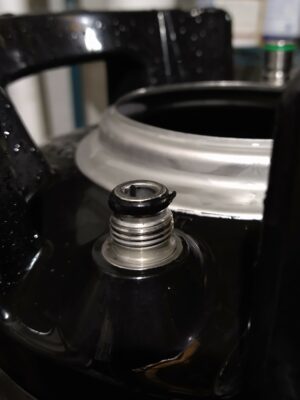 Some Old Dip Tube O-rings Were in Rough Shape
Some Old Dip Tube O-rings Were in Rough Shape
However, one of its drawbacks is it does not handle acid-based cleaners well, so Star San sanitizing can deteriorate the material. The occasional sanitizing spray might not be a significant degradation, but you definitely don’t want to soak silicone parts in Star San for extended periods of time. When you’re dealing with the cold side like fermentors or kegs, you’ll be sanitizing frequently, and this compatibility might be a consideration for you.
Check Current Price & Availability, Review Continues Below:
- FDA Rated EPDM O-Rings at Valuebrew
- Full Lineup of Food Grade O-Rings – includes custom blue and green keg post o-rings
Note that Valuebrew has regularly struggled keeping products in stock. If something you’re looking for is out of stock, connect with us and we’ll keep you up to date on availability issues.
This article contains affiliate links. We may make a small percentage if you use our links to make a purchase. You won’t pay more and you’ll be supporting Homebrew Finds and more content like this. Thank you for your support!
Another aspect of silicone that’s pertinent to cold side operation is its ability to allow oxygen to pass through it. It’s difficult to find good, standardized comparisons of material alone between silicone and EPDM because there are so many factors involved like additives in the material, thickness of material, temperature, pressure, etc. I was able to find one research paper (link below) that tested common dimension TC gaskets with different materials, and it showed the Oxygen permeability of silicone was roughly 25x as high as EPDM. So for those long durations of either sitting in your fermentor, or even longer in your keg, EPDM is the better choice to minimize oxygen mixing in through the seals. On kegs, the biggest pathway is of course the keg lid, but there are also O-ring gaskets on the dip tube, gas & liquid posts, and even inside the disconnect housing itself.
Hands on Review
I hadn’t changed my keg O-rings since the kegs were new, which had been several years. I got a full set of EPDM O-rings that ValueBrew offered- keg lid, keg post, dip tube, and internal QD. The feel of the EPDM material was notably different. It wasn’t stiff, but was relatively stiffer than super-compliant silicone O-rings. The material had a very high-quality feel- smooth with a slightly waxy texture. It definitely had the feel of quality.
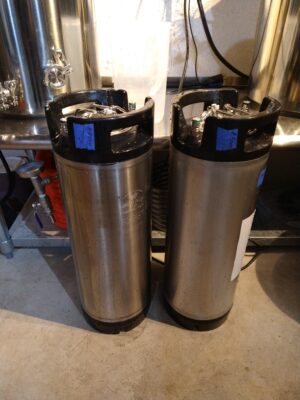
Aside from the feel and visual review, I wanted to get some “data” on how the O-rings performed. The biggest draw of EPDM for me was the low oxygen permeability. But this is hard to objectively measure, and simply tasting a beer would likewise be prone to other differences overshadowing oxygen pickup. I had a Milwaukee MW600 DO meter, but the level of oxygen uptake that could allow oxidation reactions to happen is below the threshold of measurement for the meter. Not to mention that once oxygen is available and goes through oxidation reactions with the beer, it’s no longer pure oxygen to be measured by such a meter. I gave it a try anyway. I did a side-by-side keg test with two kegs filled with water. One keg had a set of silicone O-rings, the other the EPDM O-rings. The kegs were first purged by filling with water completely and pushing that out with CO2. Then they were filled with water in through the dip tube until completely full again, and then 0.5 gallons of water pushed out with CO2 so both kegs had the same amount of headspace. Measurement with my MW600 showed indetectable DO at the start of my test, the two checkpoints in between, and at the end of a month. Not surprising since staling reactions happen at a lower level of DO than the MW600 can detect, but it does tell me that silicone O-rings aren’t a complete disaster.
The other test I did was a pressurized test to look for leaks. For this I used 6 kegs that were retrofitted with EPDM O-rings that I had recently cleaned and purged. I pressurized them all to just over 10 psi of CO2 from my tank and let them sit at basement temperature (65F). I went back and checked them all for pressure loss using a Spunding Valve. With multiple checks over a one-week period, only one of them had any pressure loss.
For that keg, I was able to see it was leaking quite significantly from the bottom of the liquid out keg post. Tightening the post had no effect, and swapping to another EPDM O-ring (plus keg lube on the O-ring) also had no effect. I then got my calipers out and started measuring O-ring thickness. I’ll preface these numbers with the disclaimer that measuring thickness of a compliant material with a handheld gauge is problematic. That said, I found the original dip tube O-rings I had removed from my kegs all measured about 2.8 mm thick and one measured 2.4 mm. New parts from the EPDM bag (including the ones that were leaking on my keg) measured 2.4 mm. I happened to have a keg O-ring replacement kit, and that O-ring measured 3.0 mm. I swapped that 3.0 mm O-ring onto the diptube and my pressure leak was gone, and the keg held pressure for my 1-week test.
My research indicated the most common cross-section thickness of these O-rings is 3/32”, which is 2.38 mm. So the EPDM rings were a standard thickness. The keg I was using it on was a keg I bought new probably 5 years ago, so it was in good shape. It was not a used reconditioned keg that had seen a lot of use & abuse in the field serving Pepsi at some random diner. It just happened to need a slightly thicker O-ring. Lesson learned for me here was to always do a pressure test like this, and not just assume all new O-rings are going to be better than the old O-rings they’re replacing.
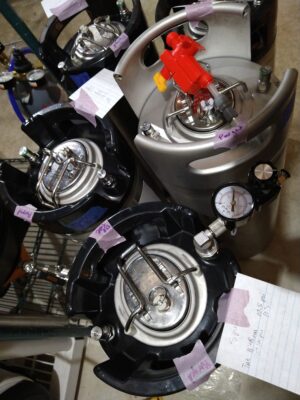 Pressure Holding Test with Spunding – Related: Hands on Review: Kegland BlowTie Spunding Valve – Build a Spunding Valve! – How and Why
Pressure Holding Test with Spunding – Related: Hands on Review: Kegland BlowTie Spunding Valve – Build a Spunding Valve! – How and Why
The final evaluation I did was on a rehabbed pin lock keg that I had bought used, converted over to ball lock by my LHBS. When I got that keg, I found it had a slow leak through the lid, and upon closer examination, I found the lip of the opening had a slight dent in it. I had previously bought a silicone O-ring for this lid, as I had heard that silicone was more compliant, and would deal with this sort of thing better. I wasn’t sure if these EPDM O-rings would handle that, but the keg held pressure with the EPDM lid O-ring the same as the other kegs.
Conclusions
In conclusion, I found the ValueBrew EPDM O-rings to be of high quality. My leak tests showed that the O-rings worked well, but it wasn’t a complete guarantee, so you need to test it on your specific kegs. And although I didn’t have the right equipment to characterize the benefit EPDM has over Silicone when it comes to oxygen permeability, the science is there to back it up. And one less thing to spoil my hoppy beers sounds like a good idea to me!
Check Current Price & Availability, Review Continues Below:
- FDA Rated EPDM O-Rings at Valuebrew
- Full Lineup of Food Grade O-Rings – includes custom blue and green keg post o-rings
Note that Valuebrew has regularly struggled keeping products in stock. If something you’re looking for is out of stock, connect with us and we’ll keep you up to date on availability issues.
Also: Hands on Review: Valuebrew Stainless Steel Ball Lock Jumpers – Works with Liquid AND Gas
Valuebrew Carries Custom Green and Blue Post O-Rings
Rebuild Your Used Kegs
Keg Deals!
kegdealsEverything For Your Kegerator!
Keg Reviews!
Food Grade Keg O-rings in Bulk!
More Homebrew Finds!
- Last 50 Finds!
- Top Deals – a curated list of the best deals
- Homebrew Reviews – one of the largest libraries of homebrew reviews in existence!
- Our Top Posts – tips, how-tos, resources posts and more
- Let’s be Friends!
Recent Deals!
10 Most Recent Homebrew Resource Posts & How-To’s!
We are Homebrew Review HQ! Our 10 Most Recent Reviews
pinnedThis post may contain affiliate links. We may make a commission when you use our links. This will never cost you extra. Thank you for supporting Homebrew Finds!
greatdealsAlso: Kegerator Tips & Gear | Keg Repair Part #s | Recent Keg Finds
Our Top Draft Resources!
Check our our Top Draft Related Resources
- Commentary: Pin Lock Keg Pricing and Availability
- Check Your CO2 Regulator for Leaks!
- How to get a keg ready for first use? New Keg Cleaning and Prep
- Portable Draft Beer Serving Options!
- Pin Lock Keg Pricing and Availability
- The Most Difficult Spot to Check for CO2 Leaks
- Keg O-Ring Materials Selection! – EPDM, Silicone and Buna-N?
- Why Do I Have Bubbles in My Beer Line? Diagnosing and Fixing Kegerator Foam Problems
- Five Benefits of Using Corny Kegs As Fermenters
- Rebuilding & Reconditioning Homebrew Kegs!
- Food Safe Replacement Keg O-Rings in Bulk
- Hands on Review: Kegland DuoTight Fittings & EVABarrier Tubing!
- Why Won’t My Beer Carbonate? Fixing Draft Beer Carbonation Problems
- What Does a Flow Control Faucet Do?
- Upgrade Your Kegerator – 6 Improvements!
- Serve Homebrew on Any Kegerator & Convert Commercial Kegerator to Homebrew
- Tips and Gear for Growler Filling
- What’s the Difference Between Ball Lock Kegs and Pin Lock Kegs?
- Checking for Draft System CO2 Leaks – Using The Pressure Gauge Method
- Tip: Consider Oetiker Stepless Clamps for Kegerator Gas and Beer Lines
- Hands On Review: Inkbird ITC-308 Dual Stage Temperature Controller +WiFi Version
- Universal Poppets Tips and Tricks!
- Convert Your Mark II Keg & Carboy Washer to a Recirculating Draft Line Cleaning Pump!
- Step by Step: Finding and Fixing Keg CO2 Leaks
- Kegerator Temperature Probe Placement – To Immerse or Not To Immerse? – three tests to determine optimal pla…
- Kegerator Beer Line Temperatures & Reducing Foam with a Recirculating Fan
- Kegging CO2 Use Estimations and Calculations
- Balancing Your Kegerator Draft System
- Building a Simple Ball Lock Draft Line Flushing Setup
- Build a Recirculating Draft Line Cleaning Pump
- Home Brew Keg Roundup – New & Used, 5 and 2.5 Gallon & More!
- Damp Kegerator? Fix Kegerator Condensation
- Homebrew Temp Controller Roundup! – Kegerator and Fermentation – concepts, applications and models
- Bulk Keg Orings and Keg Parts Reference
By Brad Probert. Check out Brad’s website – beersnobby.com
Special Thanks to Valuebrew for providing the o-ringst used for evaluation in this review.
Price, promotions and availability can change quickly. Check the product page for current price, description and availability.
Make sure the components you use are compatible and rated for your intended application. Contact manufacturer with questions about suitability or a specific application. Always read and follow manufacturer directions. tag:lnksfxd review:vbepdm tag:tpr
